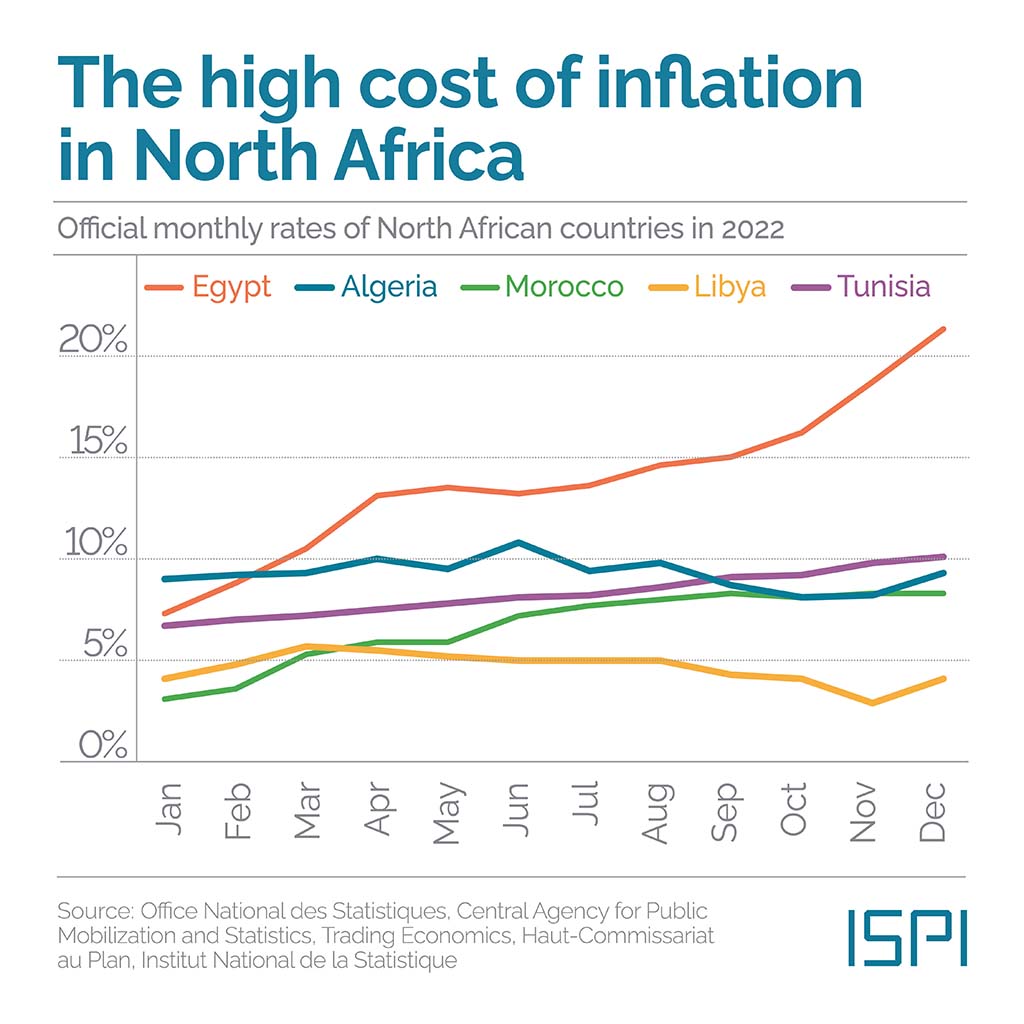Analysis of Social Security Efficacy and its Alignment with Sustainable Development Goals
A recent analysis based on a LendingTree report examines the variable purchasing power of Social Security benefits for retirees across major U.S. metropolitan areas. The findings highlight significant challenges and disparities that directly impact the achievement of several United Nations Sustainable Development Goals (SDGs), particularly those concerning poverty, health, inequality, and sustainable communities.
Social Security’s Role in Poverty Alleviation and Economic Security
Contribution to SDG 1: No Poverty
Social Security serves as a foundational social protection system in the United States, making a direct and substantial contribution to SDG 1 (No Poverty). Key data points include:
- The program is responsible for lifting more than 22 million people out of poverty each year.
- For 50% of older adults, Social Security benefits constitute the majority of their income.
Despite this vital role, the adequacy of these benefits is increasingly under pressure.
Challenges to Financial Security and Well-being
The system’s ability to ensure a life of dignity is compromised by economic realities. The projected average retirement benefit of $2,002 for 2025 is often insufficient to meet basic needs. On average, Social Security income ($21,500 annually) covers only 30% of the estimated $71,407 required for an average retiree’s expenses. This significant financial gap poses a direct threat to the well-being of seniors, undermining the core principles of SDG 1 and SDG 3 (Good Health and Well-being).
Geographic Disparities and SDG 10: Reduced Inequalities
The report reveals stark geographic disparities in the efficacy of Social Security benefits, underscoring a critical challenge to SDG 10 (Reduced Inequalities). The financial security of a retiree is heavily dependent on their location, creating unequal outcomes for individuals receiving standardized federal benefits.
Impact on SDG 11: Sustainable Cities and Communities
The variance is largely driven by the local cost of living, especially housing prices. This directly relates to SDG 11 (Sustainable Cities and Communities), as many urban centers are becoming financially unsustainable for residents on fixed incomes. The analysis ranks metropolitan areas based on how far Social Security benefits extend.
Metropolitan Area Efficacy Rankings
Cities Where Social Security Benefits Provide Highest Coverage
- McAllen, Texas
- Buffalo, New York
- El Paso, Texas
- Syracuse, New York
- Scranton, Pennsylvania
Cities Where Social Security Benefits Provide Lowest Coverage
- San Francisco, California
- Los Angeles, California
- Washington, D.C.
- Oxnard, California
- San Jose, California
Implications for Sustainable Development
Health, Well-being, and Economic Security (SDG 3 & SDG 8)
The financial strain experienced by retirees in high-cost regions has profound implications for sustainable development.
- SDG 3 (Good Health and Well-being): Financial insecurity is a major source of stress and can prevent access to adequate healthcare, nutrition, and housing, negatively impacting the physical and mental health of the elderly.
- SDG 8 (Decent Work and Economic Growth): The findings indicate that the current social protection floor is not consistently effective across the nation, failing to guarantee economic security for all retirees as envisioned by SDG targets.
Conclusion: An Urgent Need for Equitable Solutions
While Social Security is a critical tool for advancing SDG 1, its effectiveness is severely undermined by regional economic disparities. The data demonstrates a clear inequality, contrary to the goals of SDG 10, where retirees in states like California face a pretax income need as high as $85,364. This reality challenges the sustainability of high-cost cities for vulnerable populations, as noted in SDG 11. As the cost of living continues to rise, retirees may be forced into migration, seeking more affordable communities. Addressing these regional disparities is essential to ensure that the principles of the SDGs—a life of dignity, health, and economic security—are upheld for all older persons, regardless of their geographic location.
Analysis of SDGs, Targets, and Indicators in the Article
1. Which SDGs are addressed or connected to the issues highlighted in the article?
SDG 1: No Poverty
- The article directly addresses poverty among the elderly by stating, “Social Security lifts more than 22 million people out of poverty each year.” It focuses on the financial well-being of retirees, a vulnerable population group, and how a social protection system is crucial for their basic survival.
SDG 10: Reduced Inequalities
- The core theme of the article is the disparity in economic outcomes for retirees based on their geographic location. It contrasts high-cost cities like San Francisco, where Social Security benefits are insufficient, with more affordable cities like McAllen, Texas. This highlights inequality in the quality of life and financial security among older adults.
SDG 11: Sustainable Cities and Communities
- The article examines the affordability of cities for retirees. It discusses how “cost of living, housing prices and inflation” in certain urban areas make them unsustainable for people on fixed incomes. The potential for retirees being “forced to move out of states like California” points to a failure to create inclusive and affordable living environments for all age groups.
2. What specific targets under those SDGs can be identified based on the article’s content?
SDG 1: No Poverty
- Target 1.2: By 2030, reduce at least by half the proportion of men, women and children of all ages living in poverty in all its dimensions according to national definitions.
- The article’s focus on Social Security as a tool that “lifts more than 22 million people out of poverty” directly relates to this target by discussing a key mechanism for poverty reduction among older persons.
- Target 1.3: Implement nationally appropriate social protection systems and measures for all, including floors, and by 2030 achieve substantial coverage of the poor and the vulnerable.
- Social Security is the “nationally appropriate social protection system” discussed. The article analyzes its effectiveness, noting that while “half of older adults rely on Social Security for the majority of their income,” the benefit amount is often not enough to cover basic needs, questioning the adequacy of this system.
SDG 10: Reduced Inequalities
- Target 10.2: By 2030, empower and promote the social, economic and political inclusion of all, irrespective of age…
- The article highlights the challenges to the economic inclusion of older persons. The fact that retirees in some cities are “scrambling for cash” demonstrates how geographic and economic factors can lead to the exclusion of this age group from a secure financial life.
- Target 10.4: Adopt policies, especially fiscal, wage and social protection policies, and progressively achieve greater equality.
- The article is an analysis of a key social protection policy (Social Security). It implicitly calls for policy adjustments by showing that the current system does not provide equal outcomes, as “the amount of money they need on top of their monthly benefits varies drastically based on where they live.”
SDG 11: Sustainable Cities and Communities
- Target 11.1: By 2030, ensure access for all to adequate, safe and affordable housing and basic services…
- The article directly connects to this target by citing “housing prices” and “cost of living” as major barriers for retirees. The ranking of cities from best to worst for beneficiaries is essentially a measure of affordability. The mention that “the California lifestyle comes with a price tag that simply isn’t sustainable” for many retirees underscores the lack of affordable living conditions.
3. Are there any indicators mentioned or implied in the article that can be used to measure progress towards the identified targets?
Indicators for SDG 1 (No Poverty)
- Number of people lifted out of poverty by social protection: The article explicitly states, “Social Security lifts more than 22 million people out of poverty each year.”
- Proportion of older adults relying on social protection: The article notes that “half of older adults rely on Social Security for the majority of their income.”
- Average social protection benefit amount: The article provides a specific figure: “the average retirement benefit check at $2,002 in 2025.”
Indicators for SDG 10 (Reduced Inequalities)
- Geographic disparity in cost of living vs. income: The article provides data on the “implied pretax need” for retirees, such as “$85,364 for retirees in San Francisco” versus the lower costs in Texas, which serves as a direct indicator of economic inequality.
- Proportion of expenses covered by social protection benefits: The article indicates this varies by location, stating that in McAllen, Texas, Social Security covers “more than one-third of retirement spending,” while in many large cities, it doesn’t cover “more than about a third of spending costs.”
Indicators for SDG 11 (Sustainable Cities and Communities)
- Cost of living and housing prices in urban areas: The article uses these as primary metrics to rank cities on their affordability for retirees. The specific mention of high costs in San Francisco, Los Angeles, and Washington, D.C. serves as an indicator of unaffordability.
- Forced migration due to cost of living: The article implies this indicator by quoting an expert who says, “As retirees evaluate where to live, many may be forced to decide between the California lifestyle and more cost-effective alternatives.” This suggests that a lack of affordability is driving migration patterns.
4. Summary Table of SDGs, Targets, and Indicators
| SDGs | Targets | Indicators Identified in the Article |
|---|---|---|
| SDG 1: No Poverty |
1.2: Reduce poverty in all its dimensions.
1.3: Implement social protection systems. |
|
| SDG 10: Reduced Inequalities |
10.2: Promote social and economic inclusion of all, irrespective of age.
10.4: Adopt social protection policies to achieve greater equality. |
|
| SDG 11: Sustainable Cities and Communities | 11.1: Ensure access for all to adequate and affordable housing and basic services. |
|
Source: newsweek.com







